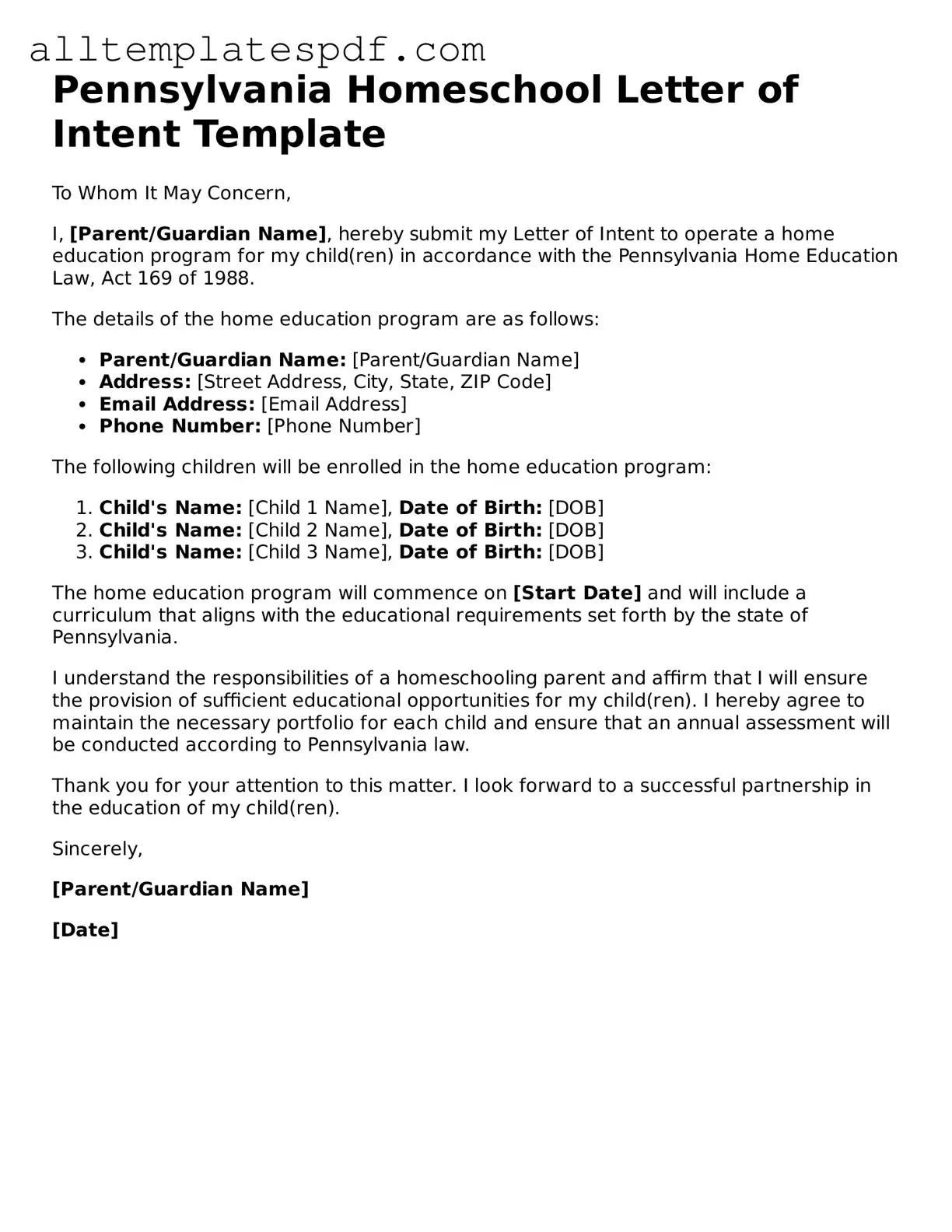Filling out the Pennsylvania Homeschool Letter of Intent form can be a straightforward process, but there are common pitfalls that many families encounter. One significant mistake is not including all required information. Each section of the form serves a purpose, and omitting details can lead to delays or even rejection of the application. It’s essential to read through the form carefully to ensure that every box is filled out completely.
Another frequent error involves incorrect dates. Families sometimes miscalculate the start date of their homeschooling program or fail to align it with the school year. This can create confusion and may result in a lack of clarity regarding educational timelines. Double-checking dates can help avoid unnecessary complications.
Some individuals overlook the necessity of providing a clear educational plan. The Pennsylvania Department of Education expects a brief outline of the curriculum or educational approach. Without this information, the form may be considered incomplete. A well-thought-out educational plan not only fulfills the requirement but also serves as a useful guide for the homeschooling journey.
Failing to sign the form is another common mistake. It might seem minor, but a missing signature can invalidate the entire submission. Always ensure that the form is signed by the parent or guardian before sending it off. This simple step can save time and frustration.
Additionally, people sometimes forget to keep a copy of the submitted form. Having a record is vital for future reference. It allows families to track their submissions and provides proof if questions arise later. Keeping a personal copy can be a helpful organizational tool.
Another oversight occurs when families neglect to follow up on their submission. After sending in the Homeschool Letter of Intent, it’s wise to check in with the local school district to confirm receipt. This proactive approach ensures that everything is in order and can prevent any misunderstandings.
Lastly, some parents may fail to familiarize themselves with the homeschooling laws and regulations specific to Pennsylvania. Understanding the legal framework helps in completing the form accurately and meeting ongoing requirements. Taking the time to research can empower families and enhance their homeschooling experience.
